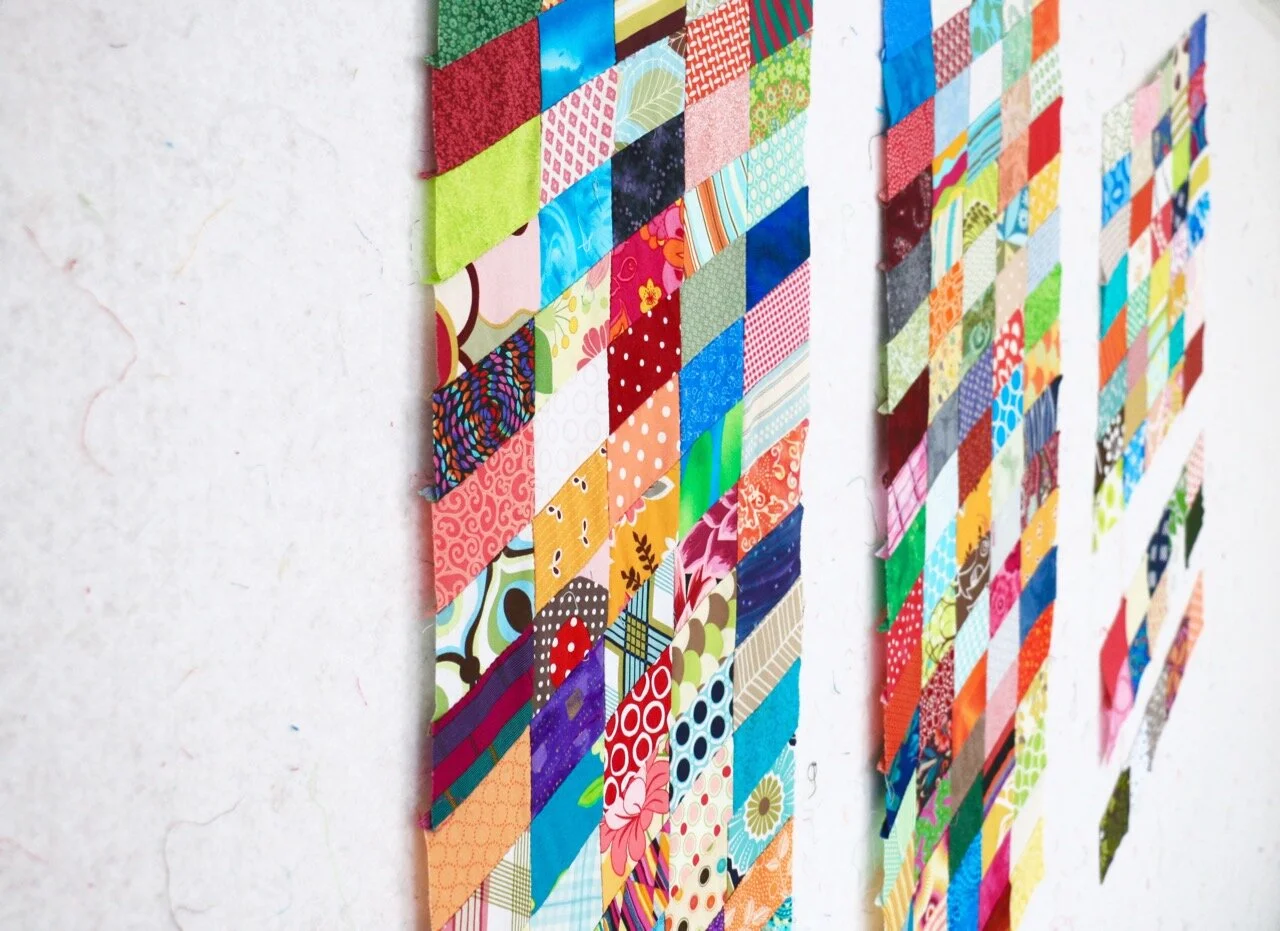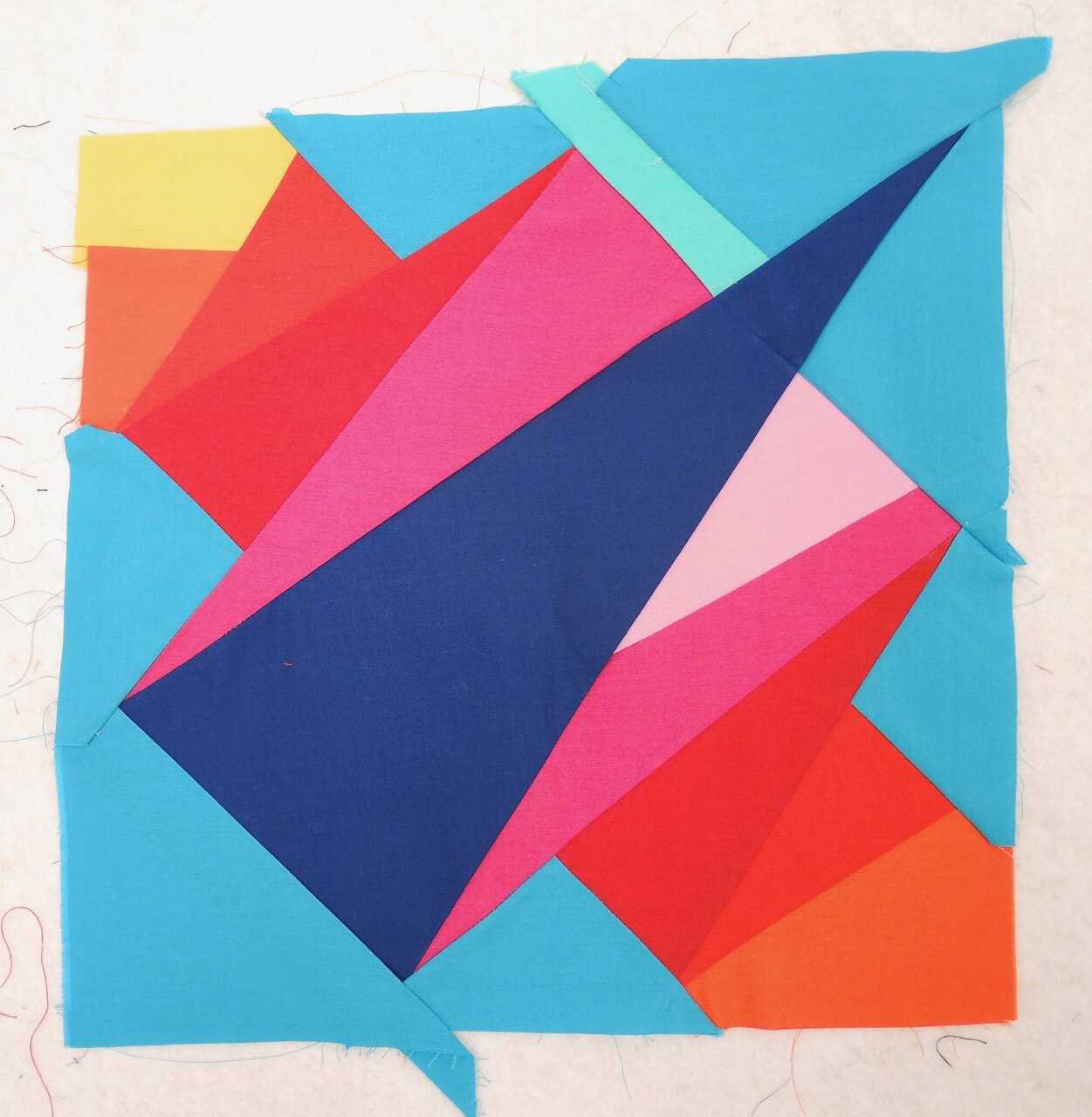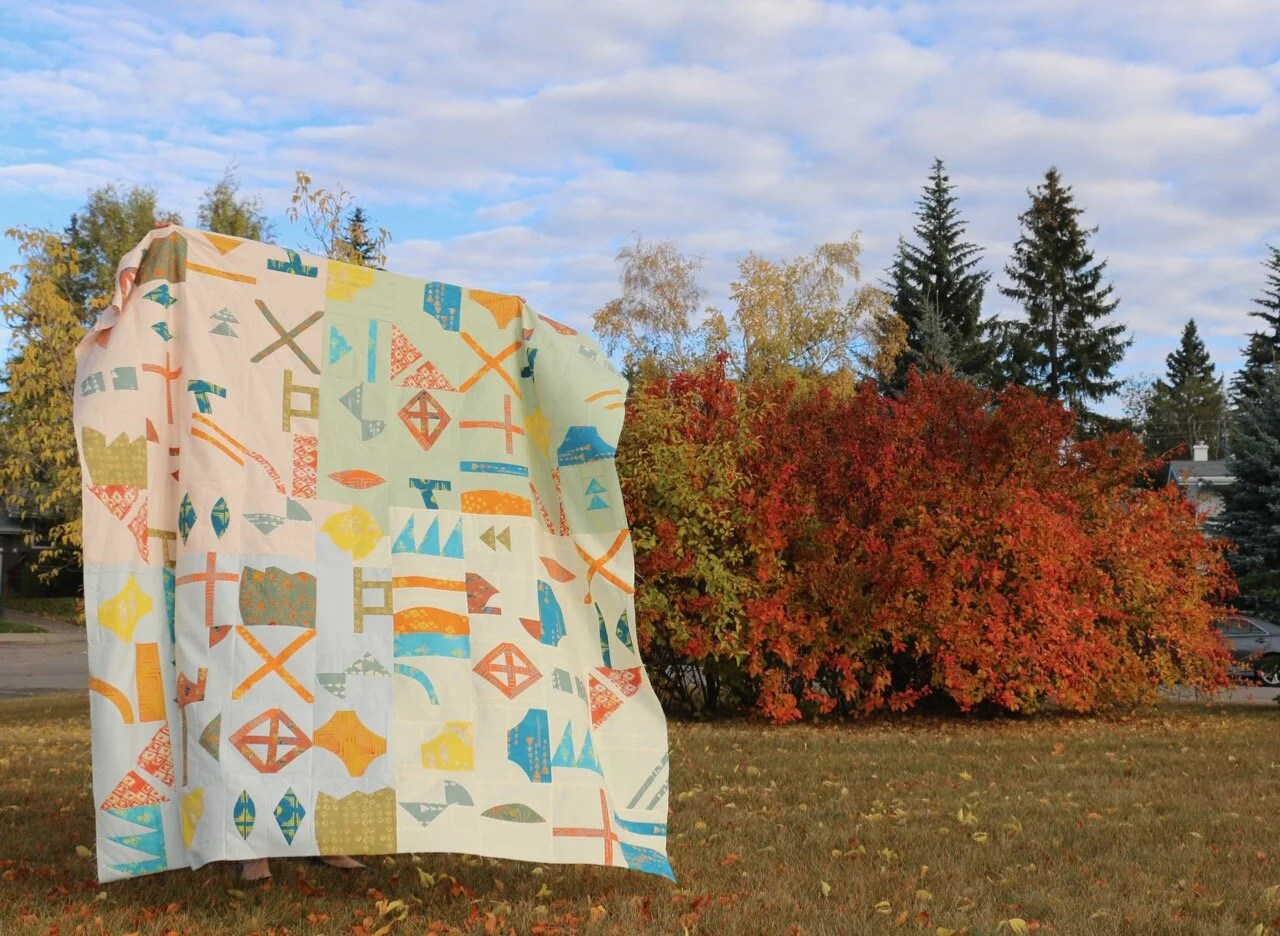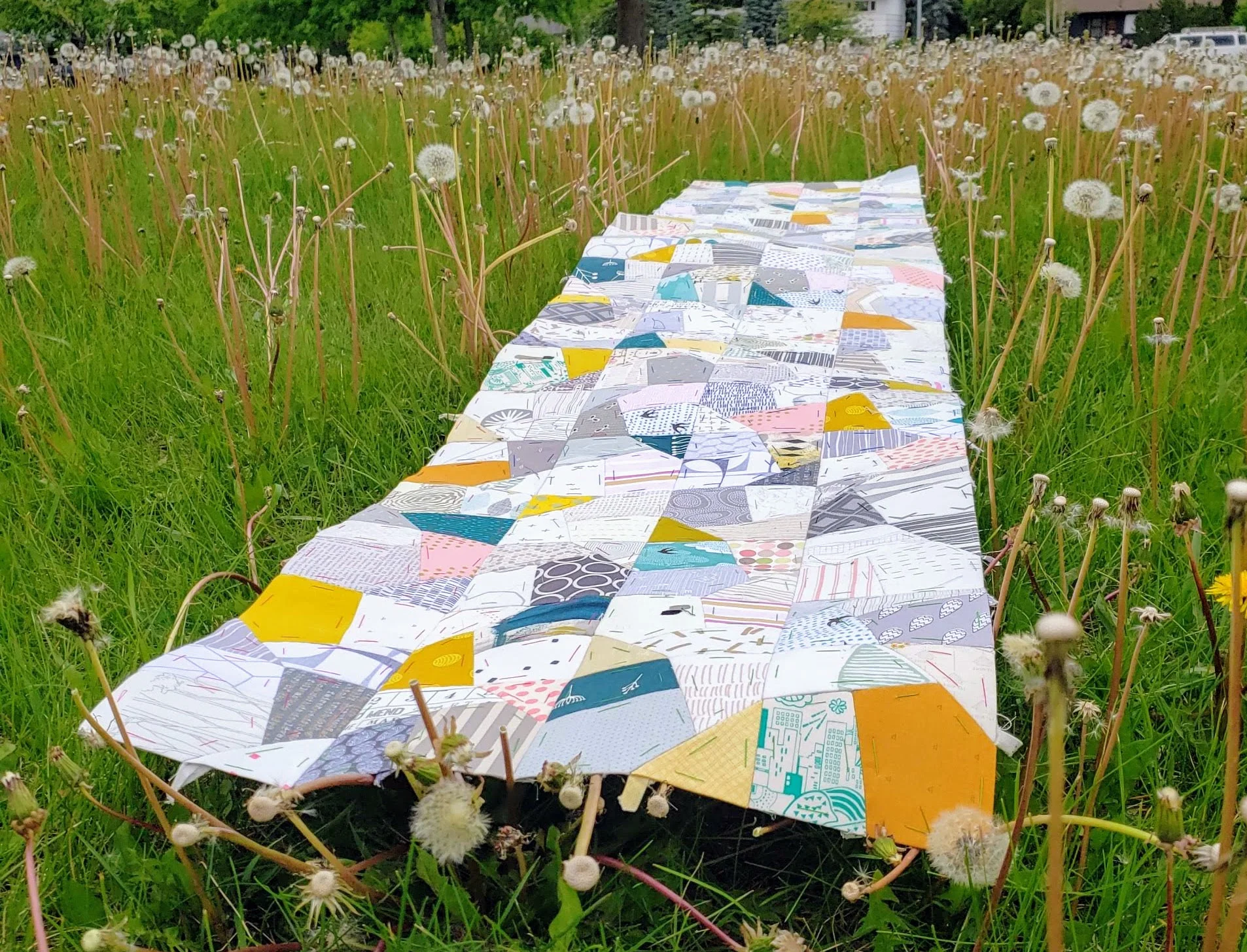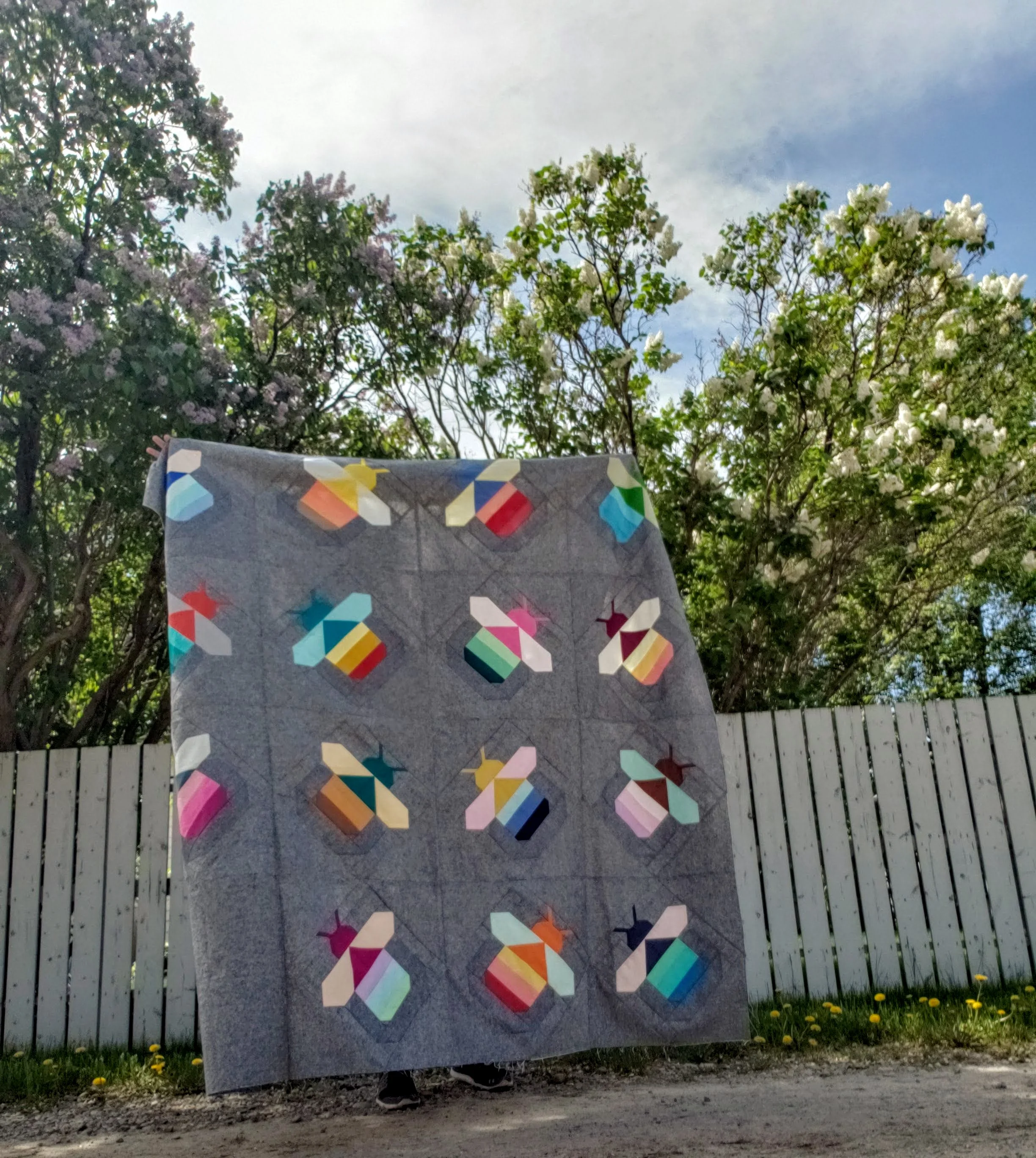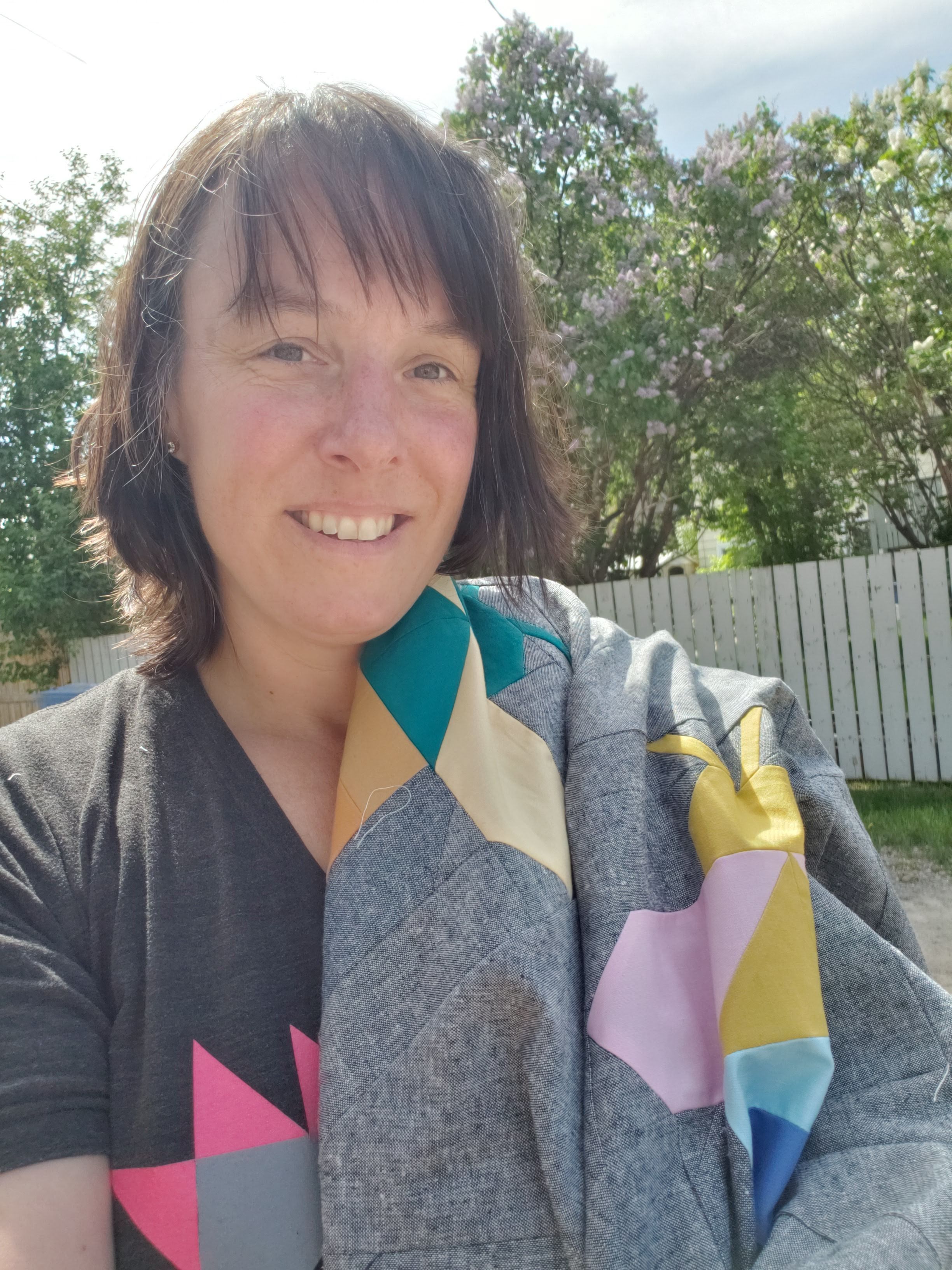Are patterns and improvisational quilting diametrically opposed? After last’s project update I had a few notes and questions from people questioning my assertion that precision piecing can be improv. I’ve heard the same thing in my classes over the years.
The perception is that you either sew improvisationally or you follow patterns. And never the two shall meet. This is far from the case. Both are creative acts and nearly all quilters, at different times, sew with varying degrees of improvisation and pattern following. It is not dissimilar to acting.
Random, scrappy hand pieced diamonds, cut from templates.
When we think of acting and improv we think of rapid fire ad libbing and comedy. It’s like the audience is experiencing the actor’s brain, as it happens. With scripted work the actor is playing out someone else’s imagination. Both are awesome, valid, and creative.
But if an actor just stood there and recited the lines of the script there would be nothing but words. It is in their interpretation, their own emotions, and their ability to translate the intent of the scriptwriter that the words come to life.
Following a pattern to make a quilt is quite similar. The designer, like the scriptwriter, is laying out the words for the actor to bring to life. Only you, the quilter, are in charge of bringing the design to life with your fabric selection, your seams, and your ways of finishing the quilt. Copy the quilt directly and you are still doing more than simply reciting the script.
Some very precise piecing in a block designed by Cristy Fincher of Purple Daisies Quilting, using her paperless paper piecing technique.
This notion that you are still creating when you sew from a pattern seems to be missing in the quilting world today. With so much of the decision making being offered up for the quilter in the form of patterns, precuts, bundles, and kits it can feel like creativity is given to us in a can. This isn’t necessarily the case.
For one, you are still making something. You are taking the time to sew together something with your own two hands (and likely a machine). This is a helluva lot more creative than going to a store to buy a blanket.
And for another, it is impossible to create exactly THAT quilt on the cover of the pattern. Even if you had all the same fabric and followed the pattern to the letter, your quilt has your hand, your sewing signature embedded in it. The stitches would be different, the quilting likely unique, and the final stitches in the binding present only in your quilt.
While pattern following may get dissed for an apparent lack of creativity, improv gets all the credit. Is that really fair?
My Lilla quilt pattern - a mix of precision piecing and improv techniques - with an improvised layout limited by the fabric on hand.
One of the most common forms of improvisational piecing is about sewing together random bits of fabric. The quilter may even remove all decision making from the process by placing their fabric in a brown paper bag or a basket. It becomes about the act of sewing, when control of fabric selection is taken away. In this sewing is still a creative act, but is there a lot of creativity involved? Absolutely there is, just like the quilter who agonizes over fabric selection for the Swoon quilt they are making. Just like the quilter who sketches out a new template for a flower they want to sew. Just like the quilter who picks a block pattern and starts making blocks with no end in site.
I often tell my Improv students that part of improvisation is the ability to accept that you are starting without knowing where you will end up. You are starting with the intent, in most cases, of making a quilt. That never changes. And that is the same regardless of how you get there in the end.
Sometimes the pattern follower decides they want to add a few blocks, or change the layout compared to the pattern cover. They might run out of fabric and need to figure out a new solution. Sometimes the improv piecer is trying to recreate a certain shape or idea through their piecing. The level of interpretation and control vary, but they are essentially doing the same thing. The pattern follower is improvising, ad libbing as they go. They’ve taken the script and gone off in their own direction, improvising. The improvisational piecer is creating a template, a pattern for the direction they want to go.
It is even unfair to say that it is a continuum. You can’t put yourself on one end or another and sometimes in between. This still sets it up as an either/or thing. It can be both, at the same time.
Creativity is there because you are creating. As soon as you make, you are being creative. Any time you make a decision along the way, you are being creative. It isn’t about who is more creative, which way of sewing is more creative, it is about the act of creating. Creativity is still there, only manifested differently each time.
You may not be the script writer or the manic actor making us laugh, but you are a quilter, no matter what.
Started with vintage fabric and HSTs. It didn’t work so I had to improvise a layout that did.
A slightly different version of this post appeared as an article in Quilty. Continued thanks to Sean Hogan, an improv actor/teacher based in LA and Leanne Chahey of She Can Quilt for their insights.


